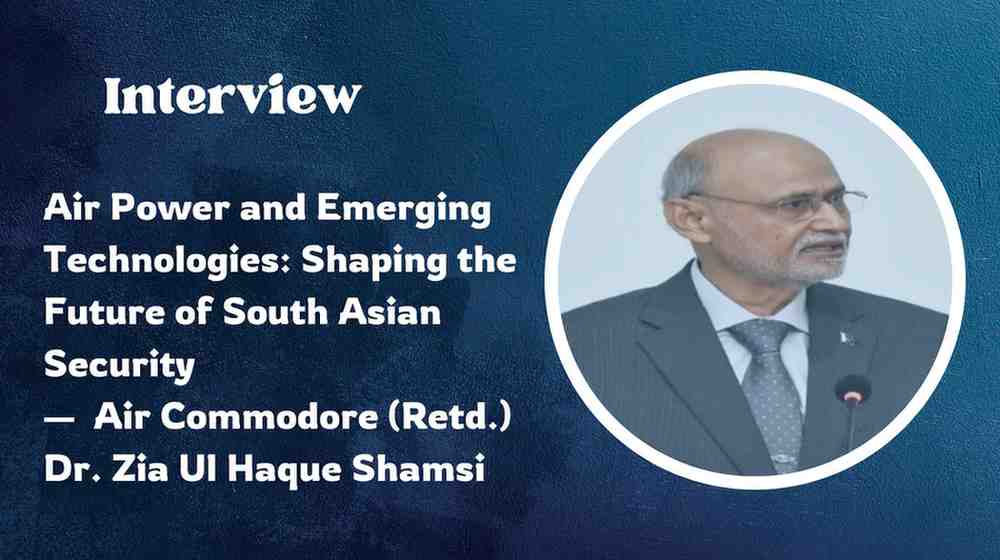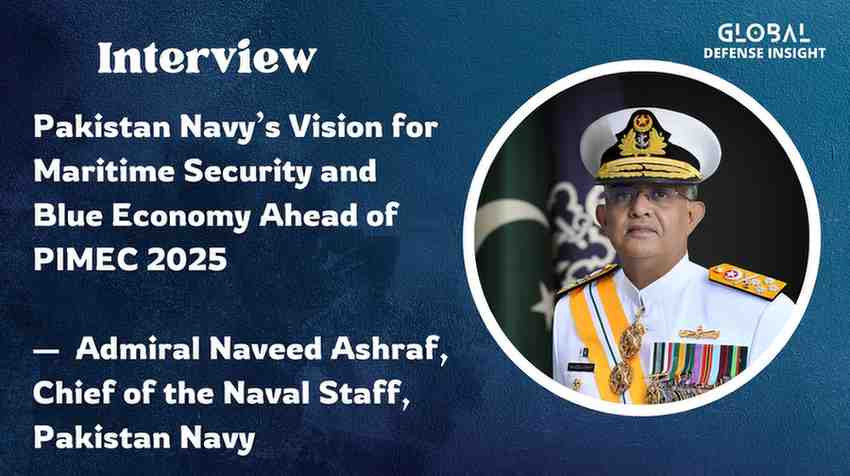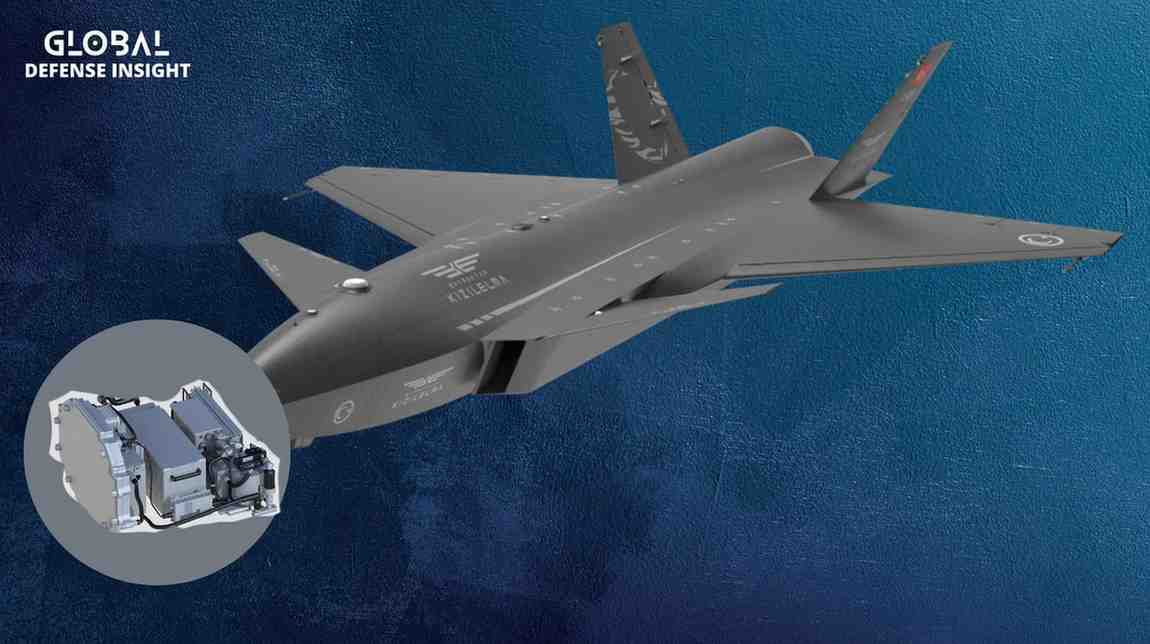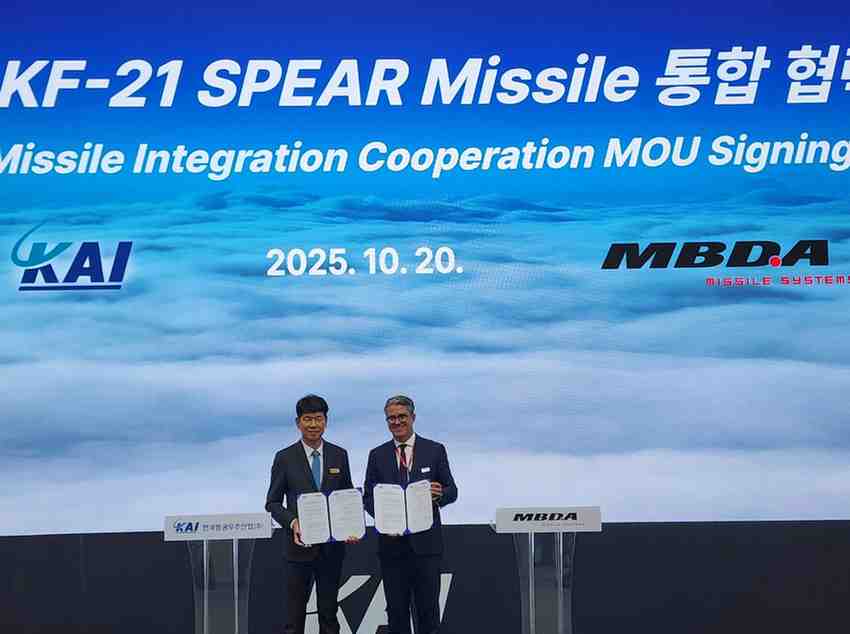In an age where artificial intelligence, automation, and unmanned technologies are transforming the dynamics of warfare, airpower remains the decisive element in shaping regional security architectures. To better understand how emerging technologies are redefining strategic doctrines in South Asia, Global Defense Insight spoke with Air Commodore (Retd.) Dr. Zia Ul Haque Shamsi, a distinguished airpower scholar and strategic analyst. In this exclusive conversation, he shares his insights on how evolving air doctrines, advanced aerial systems, and indigenous research are influencing deterrence and operational readiness across the region.
Air Commodore (Retd.) Dr. Zia Ul Haque Shamsi served with distinction in the Pakistan Air Force (70th GD(P)), commanding No. 5 TA&R Squadron, No. 34 TA Wing, and PAF Base Kohat, while also serving as ACAS (Plans & Coordination) and ACAS (Works) at Air Headquarters. Decorated with Sitara-i-Imtiaz (Military) and Tamgha-i-Imtiaz (Military), he is a graduate of the National Defence University, Air War College, South African Defence College, and Australian Defence College. Holding a PhD in Strategic Studies, he is also the first Pakistani author to publish four international books in four consecutive years, most recently Diplomacy and Deterrence (2024). Beyond his service, Dr. Shamsi continues to contribute to national discourse as a writer, academic, and public intellectual on airpower, strategy, and hybrid warfare.
How do you assess the evolution of air power in South Asia, particularly in light of the changing regional threat environment?
Airpower is inherently offensive and cannot be employed effectively with a defensive mindset. The PAF has proven itself time and again against its three times larger opponent, the IAF. In my opinion, the PAF understood this phenomenon of airpower and the precepts of the Quaid that it must become an efficient air force, second to none. Therefore, the evolution of air power in South Asia has been in sync with its true potential.
After the May 2025 conflict, how do you evaluate the current air warfare doctrines of regional air forces, and what key lessons should Pakistan draw from that episode?
Both PAF and IAF regularly review their air doctrines as and when new technology is introduced or either opponent inducts a new weapon system. Post May 2025, the focus is likely to shift towards the acquisition and operationalisation of weapon systems that will have greater ranges and offer an opportunity for the first shot Beyond Usual Ranges (BUR). Interestingly, the PAF has set the tone, and the rest of the air forces will likely follow suit.
Pakistan is reportedly considering the procurement of the J-35A stealth fighter. In your view, what impact could this platform have on Pakistan’s deterrence posture and regional air balance?
PAF is currently considering several platforms, and the J-35A is one of them. PAF has extensive experience operating US-built state-of-the-art aircraft, dating back to its first acquisition of the F-86 Sabre, F-104 Starfighter, and F-16 Fighting Falcon. Each one of these weapon systems gave PAF a technological edge over the IAF in various wars and conflicts between the two rivals. If PAF goes for it, IAF will undoubtedly strive to match the response. However, regardless of which aircraft the PAF selects, it will master it through training and strategy to maintain its edge over the IAF.
How are unmanned aerial systems (UAS) and loitering munitions redefining air superiority and battlefield effectiveness in contemporary conflicts?
The beauty of UAS lies in their ever-present presence in the air. They have a longer duration, carry multiple munitions, and do not put pilots’ lives at risk. Therefore, whichever opponent can build a larger force comprising UAS will have an edge on the battlefield that could be in any zone of operation. Remember, the primary objective of airpower is to gain, maintain, and sustain air superiority in and around the battlefield.
What challenges does Pakistan face in integrating AI, data-driven targeting, and automation into its air and defence ecosystem?
PAF has been at the forefront of integrating emerging and disruptive technologies into its operational plans and regularly updates them accordingly. PAF demonstrated its capability during the May 2025 war against its much larger adversary. I am confident that PAF will continue to invest and integrate AI in its operations across all platforms.
How significant is indigenous R&D and local industry participation in building long-term resilience for Pakistan’s air power?
There is little doubt that one has to defend oneself with whatever one has. PAF fully understand the significance of the domestic defence industry and indigenous R&D. NASTP is the right step in this direction. The inclusion of private sector entities and foreign investors in the R&D of critical defence equipment and munitions is a PAF priority, and hence it is striving hard to achieve this.
What strategic implications do emerging drone swarms and autonomous systems hold for South Asian security in the next decade?
UAS will have a significant role in any future conflict in South Asia. The swarms in greater numbers will saturate the defences and may have a minimal signature on the radar screens. However, their effectiveness will largely depend on the employment strategy of either side.
Finally, how should the Pakistan Air Force evolve its doctrine and training to remain effective in an era of hybrid and technology-driven warfare?
PAF is aware of the evolving strategic environment in South Asia. PAF is monitoring the large-scale defence acquisitions and indigenous production of arms, equipment, and platforms by its adversary. The PAF has always been at a numerical disadvantage, but it has never let this become a hurdle in its preparations and operations against the IAF. The hallmark of PAF’s success lies in LIST3 (Leadership, Innovation, Strategy, Technology, Training, and Teamwork). I am confident that PAF will continue to evolve and not lag in terms of integrating new technologies into its inventory and, consequently, its doctrines.
- Global Defense Insighthttps://defensetalks.com/author/umair/
- Global Defense Insighthttps://defensetalks.com/author/umair/
- Global Defense Insighthttps://defensetalks.com/author/umair/
- Global Defense Insighthttps://defensetalks.com/author/umair/











